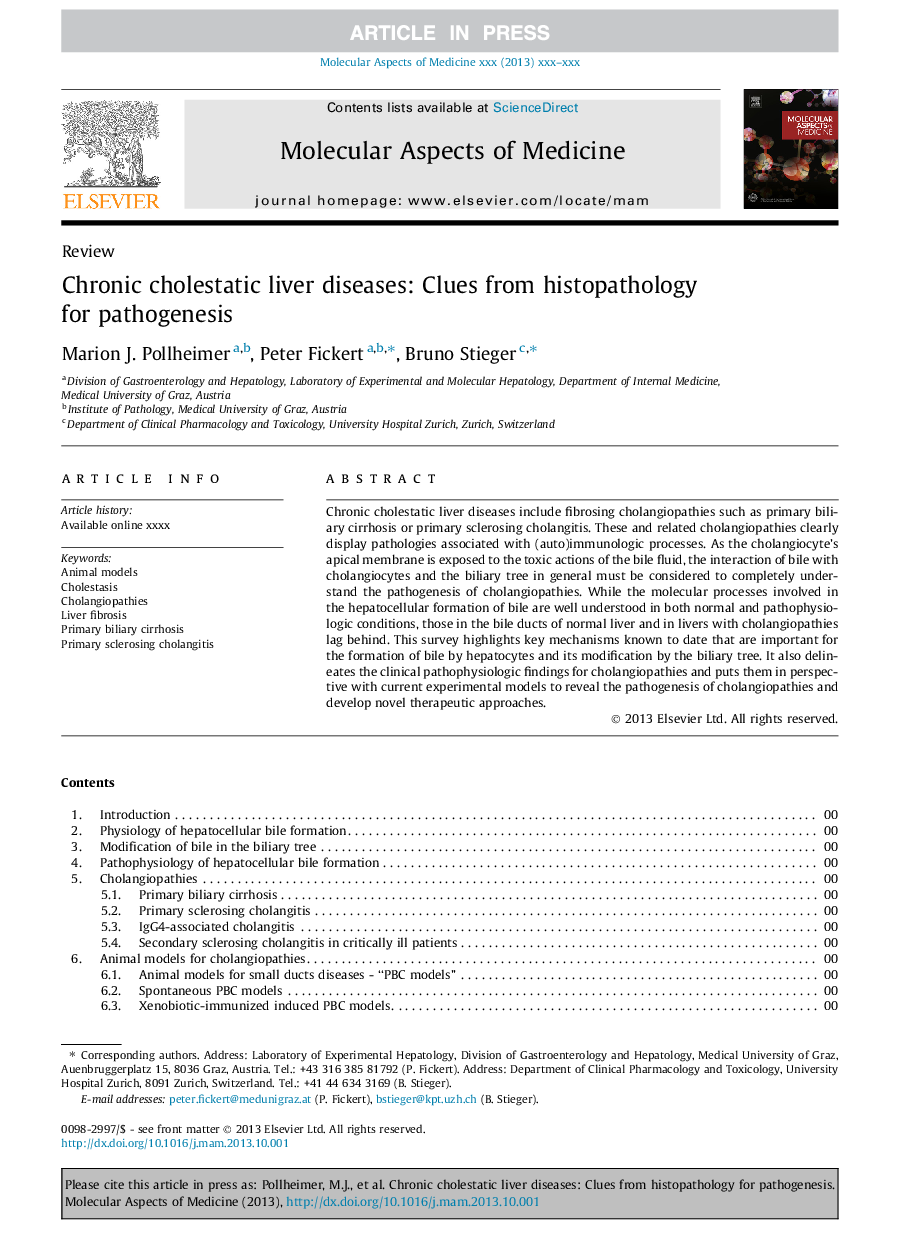| Article ID | Journal | Published Year | Pages | File Type |
|---|---|---|---|---|
| 8341472 | Molecular Aspects of Medicine | 2014 | 22 Pages |
Abstract
Chronic cholestatic liver diseases include fibrosing cholangiopathies such as primary biliary cirrhosis or primary sclerosing cholangitis. These and related cholangiopathies clearly display pathologies associated with (auto)immunologic processes. As the cholangiocyte's apical membrane is exposed to the toxic actions of the bile fluid, the interaction of bile with cholangiocytes and the biliary tree in general must be considered to completely understand the pathogenesis of cholangiopathies. While the molecular processes involved in the hepatocellular formation of bile are well understood in both normal and pathophysiologic conditions, those in the bile ducts of normal liver and in livers with cholangiopathies lag behind. This survey highlights key mechanisms known to date that are important for the formation of bile by hepatocytes and its modification by the biliary tree. It also delineates the clinical pathophysiologic findings for cholangiopathies and puts them in perspective with current experimental models to reveal the pathogenesis of cholangiopathies and develop novel therapeutic approaches.
Keywords
Related Topics
Life Sciences
Biochemistry, Genetics and Molecular Biology
Biochemistry
Authors
Marion J. Pollheimer, Peter Fickert, Bruno Stieger,
